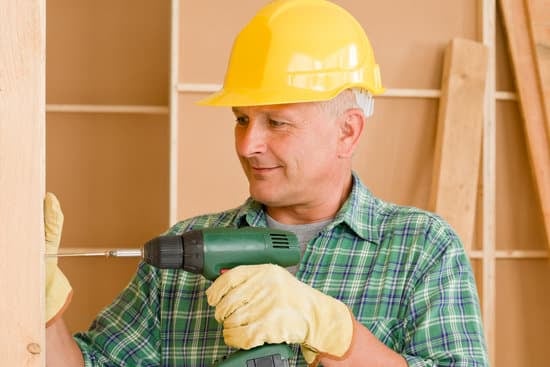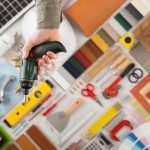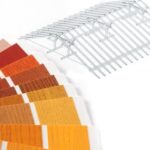Are you wondering how to make a home improvement video that will captivate and inform your audience? Whether you’re a DIY enthusiast looking to share your projects or a professional in the home improvement industry, creating high-quality videos can be a powerful way to connect with viewers and showcase your expertise. In this article, we’ll explore the essential steps and considerations for producing engaging and informative home improvement videos.
Home improvement videos have become increasingly popular in recent years, thanks to the growing demand for practical, visual content that offers valuable insights and inspiration. From step-by-step tutorials on tackling common household repairs to showcasing stunning before-and-after transformations, these videos provide a wealth of information and guidance for homeowners and DIY enthusiasts alike.
Understanding the importance of creating compelling home improvement videos can help you effectively reach your target audience and establish yourself as a knowledgeable resource in the industry.
In the following sections, we’ll cover everything you need to know about planning, filming, editing, and promoting your home improvement video projects. From setting clear goals and objectives to selecting the right equipment and mastering filming techniques, you’ll gain valuable insights into the process of producing high-quality content that resonates with viewers.
Whether you’re new to video production or looking to enhance your existing skills, this guide will equip you with the knowledge and tools needed to create engaging and informative home improvement videos that stand out from the crowd.
Planning Your Video Project
When it comes to making a home improvement video, one of the most important steps is to plan your video project by setting clear goals and objectives. This will help ensure that your video is focused, organized, and effectively communicates the message you want to share with your audience.
First and foremost, take the time to define the purpose of your home improvement video. Are you looking to showcase a specific project, provide instructional DIY content, or demonstrate before-and-after transformations? Understanding the goal of your video will help guide the entire production process and make it easier to set clear objectives for what you want to accomplish.
In addition to defining the purpose of your video, it’s important to establish specific objectives that align with your overall goal. For example, if you’re showcasing a DIY home renovation project, your objectives might include highlighting key steps in the process, offering useful tips and tricks, and demonstrating the final results. By identifying these objectives early on, you can ensure that your video stays focused and delivers valuable content to your viewers.
Finally, consider your target audience when setting goals and objectives for your home improvement video. Who are you creating this video for? What do you want them to take away from watching it? Keeping your audience in mind will help shape the direction of your video and ensure that it resonates with those who are most likely to benefit from the content.
| Goals | Objectives |
|---|---|
| Define purpose of the video | Highlight key steps in the process |
| Establish specific objectives | Offer useful tips and tricks |
| Consider target audience | Demonstrate final results effectively |
Essential Equipment and Tools Needed for Filming a Home Improvement Video
When it comes to filming a home improvement video, having the right equipment and tools is crucial for capturing high-quality footage. Here are some essential items you will need to ensure that your video project is a success:
- Camera: Invest in a good quality camera that can capture clear and sharp images. A DSLR camera with video capabilities or a high-quality camcorder are great options for filming home improvement projects.
- Tripod: To stabilize your shots and avoid shaky footage, using a tripod is essential. Look for a sturdy and adjustable tripod that can hold the weight of your camera.
- Lighting: Good lighting is key to showcasing the details of your home improvement projects. Invest in professional lighting equipment such as LED panels or softboxes to ensure that your videos are well-lit and visually appealing.
- Audio recording equipment: Clear audio is just as important as good visuals. Consider using an external microphone or a lavalier mic to capture high-quality sound while filming.
- Tools: Depending on the specific home improvement project you are filming, make sure to have all the necessary tools at hand. This may include hammers, screwdrivers, drills, measuring tape, and any other relevant tools.
In addition to the equipment listed above, having spare batteries, memory cards, and additional storage is also important to ensure that you can continue filming without interruptions. It’s also worth considering investing in editing software to fine-tune your footage during post-production.
When planning to film a home improvement video, it’s important to carefully consider the necessary equipment and tools needed to capture professional-looking footage that will engage and inform your audience on how they can tackle similar projects themselves.
Choosing the Right Location for Filming
When creating a home improvement video, choosing the right location for filming is crucial in showcasing your project effectively. Whether you are renovating your kitchen, landscaping your backyard, or painting a room, the location where you film can greatly impact the quality and appeal of your video. Here are some tips on how to make the most of your space when filming a home improvement video:
1. Consider the lighting: Natural light is often the best option for filming home improvement projects. Choose a location with ample natural light, such as near a large window or glass door. This will help to showcase your project in the best possible light (literally.) and ensure that every detail is clearly visible to your viewers.
2. Declutter and stage the area: Before filming, take the time to declutter and stage the space where you will be working. Remove any unnecessary items, tidy up the area, and consider adding props or decorative elements that complement your project. This will create a more visually appealing backdrop for your video and help to keep the focus on the home improvement task at hand.
3. Consider background noise: When choosing a location for filming, be mindful of potential sources of background noise such as traffic, appliances, or construction work nearby. If possible, try to minimize these distractions or choose a different location where noise will be less of an issue.
By carefully selecting and preparing the location for filming your home improvement video, you can ensure that your project is presented in the best possible way. A well-chosen location with good lighting and minimal distractions can greatly enhance the overall quality and appeal of your video.
For more tips on how to make a home improvement video successful through effective location selection as well as all other steps throughout production check out our previous section “Planning Your Video Project”. Creating high-quality videos documents breathtaking transformations that truly inspire others.
Scripting and Storyboarding Your Video
When it comes to creating a home improvement video, scripting and storyboarding are essential steps in ensuring that you deliver a compelling narrative that engages your audience. A well-crafted script will help you communicate your message clearly and concisely, while storyboarding will guide the visual aspects of your video. In this section, we will discuss how to effectively script and storyboard your home improvement video to create a captivating narrative.
The first step in scripting your home improvement video is to outline the key points that you want to cover. Whether you are demonstrating a DIY project or showcasing a before-and-after transformation, it’s important to have a clear structure for your video.
Consider the flow of information and how you want to capture the attention of your viewers from start to finish. This will help you craft a script that keeps your audience engaged throughout the entire video.
Once you have your script in place, the next step is storyboarding. Storyboarding involves sketching out each scene of your video to visually represent how it will look on screen. This process allows you to plan the framing, composition, and sequence of shots for each part of your home improvement project. By creating a storyboard, you can ensure that every detail has been carefully considered before filming, resulting in a more polished and professional end product.
It’s important to remember that scripting and storyboarding are not set in stone – they are living documents that can be adjusted as needed during the filming process. Flexibility is key when it comes to creating a compelling narrative for your home improvement video. Keep in mind that planning ahead with a solid script and storyboard will ultimately save you time and effort in the long run, leading to a more successful video production.
| Aspect | Description |
|---|---|
| Scripting | Outlining key points for clarity. |
| Storyboarding | Planning visual aspects of the video. |
Filming Techniques and Best Practices for Capturing Home Improvement Projects
When it comes to filming home improvement projects, it’s essential to use the right techniques and best practices to ensure that your video is engaging and informative. Whether you’re a beginner or an experienced videographer, capturing home improvement work on camera requires some skill and knowledge. In this section, we’ll explore some key filming techniques and best practices that will help you create high-quality videos that showcase your home improvement projects effectively.
Use the Right Camera Equipment
One of the most important aspects of filming a home improvement project is using the right camera equipment. While professional-grade cameras can deliver exceptional results, you don’t necessarily need to invest in expensive gear to create a great video. Many modern smartphones have advanced camera capabilities that can produce high-quality footage. However, if you’re looking for more control over your video quality, consider investing in a DSLR or mirrorless camera with 4K capabilities.
Lighting Considerations
Proper lighting is crucial for capturing home improvement projects effectively. When filming indoors, make sure to use natural light whenever possible. Position your camera so that it faces the light source, which will help illuminate your subject without creating harsh shadows. If natural light isn’t sufficient, consider using artificial lighting sources such as softboxes or LED panels to achieve the desired effect.
Stabilization Techniques
To ensure smooth and steady footage, it’s important to use stabilization techniques when filming home improvement projects. Whether you’re shooting handheld or using a tripod, incorporate techniques such as panning and tilting to add visual interest to your footage. Additionally, consider using stabilizing equipment such as gimbals or steady cams for more professional-looking results.
By incorporating these filming techniques and best practices into your home improvement video projects, you can create compelling and visually appealing content that resonates with your audience. With proper planning and execution, you can effectively showcase your home improvement projects while providing valuable information to viewers on how they can tackle their own DIY endeavors.
Editing and Post-Production
After capturing all the footage for your home improvement video, the next crucial step is editing and post-production. This process involves piecing together all the raw footage, adding transitions, music, voiceovers, and any necessary special effects to create a polished final product. In this section, we will discuss the essential steps and best practices for editing and enhancing your home improvement video.
One of the first things to consider during post-production is organizing your footage. This includes labeling and categorizing clips based on their content and relevance to different parts of your video. Additionally, it’s important to select the best shots that effectively showcase each stage of the home improvement project.
Once you have organized your footage, you can start assembling the video using editing software. You can also include text overlays or captions to provide additional information or instructions to viewers.
Another crucial aspect of post-production is adding professional polish to your video through color correction and audio enhancement. It’s essential to ensure that the colors in your video are balanced and consistent throughout, creating a visually appealing result. Additionally, paying attention to sound quality is important – background noise should be minimized, dialogue should be clear and easily understandable, and music or sound effects should enhance the overall viewing experience.
Optimizing and Promoting Your Home Improvement Video
Optimizing Your Home Improvement Video
When it comes to optimizing your home improvement video, there are a few key areas to focus on. First and foremost, you’ll want to ensure that your video is optimized for search engines. This means doing keyword research to identify the terms and phrases that your target audience is searching for, and then incorporating those keywords into your video title, description, and tags.
In addition to optimizing for search, you’ll also want to optimize your video for social media. This means creating eye-catching thumbnail images and writing engaging captions that will entice people to click on and watch your video. You may also want to consider creating shorter teaser videos or snippets of your main video to share on platforms like Instagram and TikTok.
Promoting Your Home Improvement Video
Once your video is optimized, the next step is promotion. There are a variety of ways you can promote your home improvement video, including sharing it on your own social media channels, reaching out to influencers or bloggers in the home improvement space to see if they’d be willing to share it with their followers, or even running paid advertising campaigns on platforms like YouTube or Facebook.
You may also want to consider submitting your video to relevant websites or online communities where people who are interested in home improvement projects are likely to congregate. Be sure to read each platform’s guidelines for self-promotion before sharing your video, as some communities may have strict rules about this type of content.
With these strategies in mind, you can effectively optimize and promote your home improvement video in order to reach and engage with your target audience.
Conclusion
In conclusion, creating high-quality and engaging home improvement videos requires careful planning, the right equipment, and a compelling narrative. By following the tips outlined in this article, you can produce professional-looking videos that captivate your audience and provide valuable content. Remember to set clear goals and objectives for your video project, choose the right filming location, script and storyboard your video effectively, and use filming techniques that showcase your home improvement projects in the best possible light.
Additionally, incorporating post-production techniques such as editing and adding professional polish to your videos will enhance their overall quality. Whether you are a DIY enthusiast looking to share your projects with others or a professional in the home improvement industry seeking to showcase your work, these tips will help you create videos that resonate with your target audience.
And don’t forget to optimize and promote your videos through social media and other online platforms to reach a wider audience.
By applying the knowledge gained from this article on how to make a home improvement video, you can elevate the production value of your videos and increase their appeal. Embracing these tips will not only enhance the quality of your content but also establish you as an authority in the field of home improvement. With dedication and practice, you can take your video production skills to the next level and effectively share your passion for home improvement with others.
Frequently Asked Questions
How Can I Make Money in Home Improvements?
Making money in home improvements can be achieved through various avenues. One option is to become a skilled tradesperson, such as a carpenter, electrician, or plumber, and offer your services to homeowners.
Another way is to buy, renovate, and sell properties for a profit – commonly known as “flipping houses.” Additionally, you can start a home improvement business offering services like landscaping, painting, or interior design.
How Do I Prepare for a Home Improvement Project?
Before starting a home improvement project, it’s important to thoroughly plan and prepare. This includes setting a budget, creating a timeline for the project, and obtaining any necessary permits or approvals.
Researching different materials and designs can also help in making informed decisions about the project. Lastly, it’s crucial to hire reputable contractors or tradespeople if the project requires professional assistance.
How to Do Home Improvements?
Home improvements can be done by first identifying the areas of the home that need attention. This could include renovating the kitchen or bathroom, adding new flooring, updating fixtures and fittings, or enhancing the curb appeal of the property with landscaping. Once the specific areas for improvement are identified, it’s essential to plan out the project in detail before beginning any work.
This may involve hiring professionals for certain tasks and doing some DIY work depending on your skill level. Throughout the process, regular maintenance of tools and equipment is also important to ensure safety and efficiency.

I’m thrilled to have you here as a part of the Remodeling Top community. This is where my journey as an architect and remodeling enthusiast intersects with your passion for transforming houses into dream homes.





